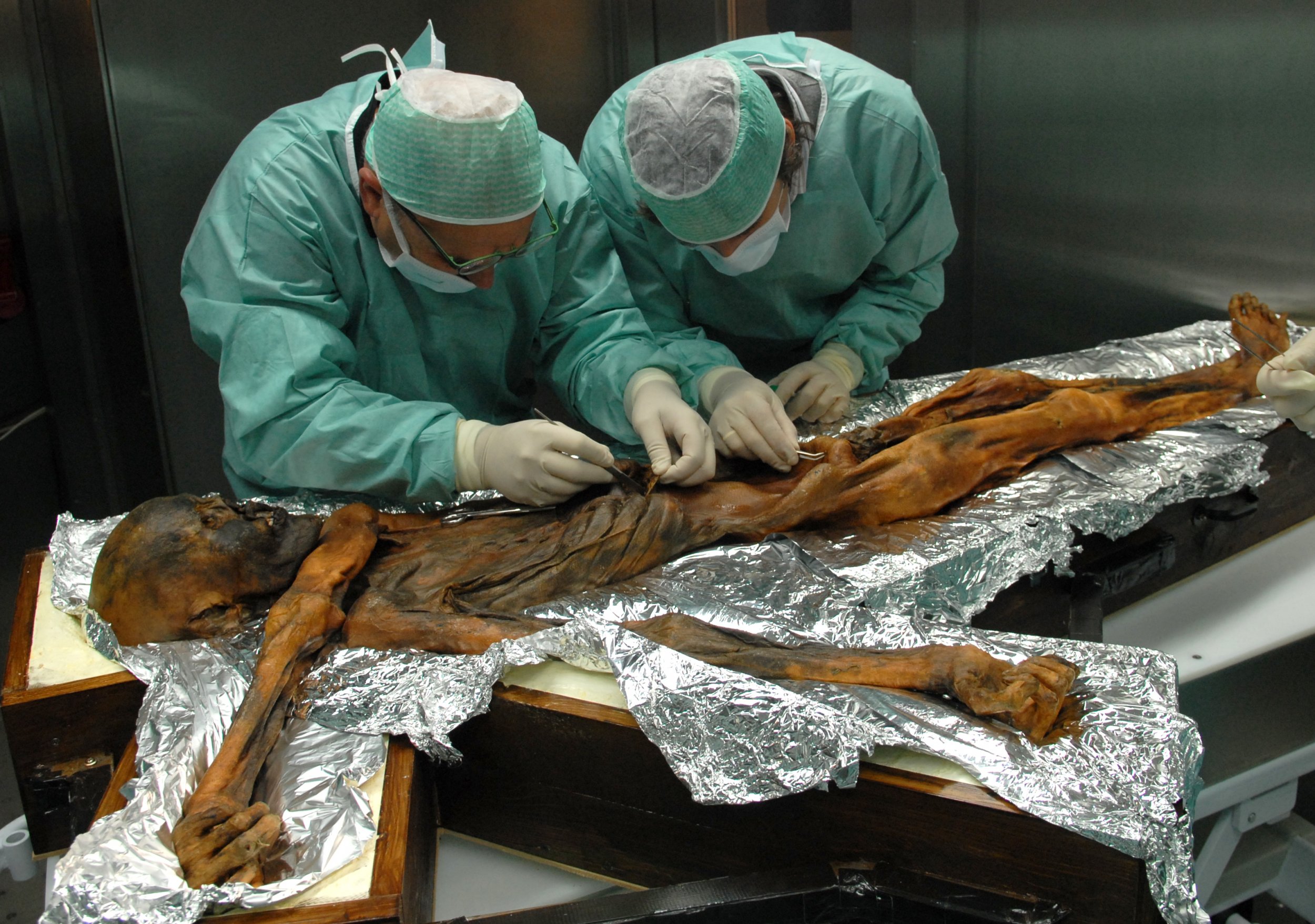
In 1991, hikers in the Eastern Italian Alps stumbled upon a human body in the snow that, at first, was thought to belong to a recently deceased individual. Later analysis revealed that the corpse, dubbed "Ötzi the Iceman," was actually Europe's oldest naturally-preserved mummy.
The discovery of Ötzi—who died around 5,300 years ago—has shed new light into the lives of Copper Age Europeans. Now, researchers from the EURAC Research Institute for Mummy Studies in Bolzano, Italy, have conducted the first in-depth analysis of the Iceman's stomach—which was full at the time of death—revealing intriguing details about the diets and food habits of ancient humans.
The findings, which are published in the journal Current Biology, show that the contents of Ötzi's stomach—which included wild meat from ibex and red deer, cereals and traces of toxic bracken—were remarkably high in fat.
The scientists used microscopic techniques and more advanced molecular approaches to analyze samples from Ötzi's stomach in order to build a picture of the Iceman's diet prior to his death. Their analysis showed that around half of the stomach's contents were fatty tissue.
This high proportion of fat was unexpected, according to the researchers, although they say such a diet would have been beneficial given the harsh alpine environment.
"The high and cold environment is particularly challenging for the human physiology and requires optimal nutrient supply to avoid rapid starvation and energy loss," Albert Zink, from EURAC, said in a statement. "The Iceman seemed to have been fully aware that fat represents an excellent energy source."
It appears that the wild meat was likely eaten fresh, or it may have even been dried before consumption, according to the analysis.
The presence of toxic bracken in the stomach was more difficult to explain, but the researchers suggest that Ötzi may have been suffering from intestinal problems and took the bracken as a medicine. There is also the possibility that he used the bracken leaves to wrap food, and unintentionally consumed the toxins.
Strangely, researchers did not know where Ötzi's stomach was until CT scans of the body were re-investigated in 2009. This is because the organ had moved upwards during the mummification process, coming to rest just under the ribs where the lungs usually are.
"The stomach material was, compared to previously analyzed lower intestine samples, extraordinarily well preserved, and it also contained large amounts of unique biomolecules, which opened new methodological opportunities to address our questions about Otzi's diet," Frank Maixner, also from EURAC, said.
Uncommon Knowledge
Newsweek is committed to challenging conventional wisdom and finding connections in the search for common ground.
Newsweek is committed to challenging conventional wisdom and finding connections in the search for common ground.
About the writer
Aristos is a Newsweek science reporter with the London, U.K., bureau. He reports on science and health topics, including; animal, ... Read more
To read how Newsweek uses AI as a newsroom tool, Click here.








